 |
Willis Seaver Adams (1844-1921)
#L02.038
Painter Willis Seaver Adams, whose works were praised in this 1906 report of a Deerfield, Massachusetts, exhibit, is known for his Connecticut River Valley landscapes.
|
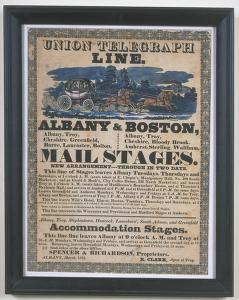 |
Albany, New York
#1999.13.510
Located on the Hudson River near the confluence with the Mohawk River, Albany is one of the oldest cities in the United States.
|
 |
Frances and Mary Allen
#M.17
In 1901, Frances and Mary Allen of Deerfield, Massachusetts, were praised as being among "the foremost women photographers in America."
|
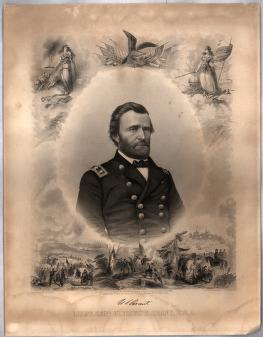 |
American Civil War 1861-1865
#L02.024
The Civil War in the United States, a result of Southern slavery and other vastly different ways of life between the North and South, lasted four bloody years.
|
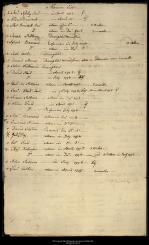 |
American Revolution 1775-1783
#L99.085
Many new Americans resented being ruled from a distance by Great Britain, and the colonies went to war to attain their independence.
|
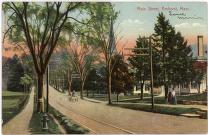 |
Amherst, Massachusetts
#1997.08.01.0125
Originally part of Hadley, Amherst was incorporated in 1786 and throughout its history has housed many industries and institutio
|
 |
William Apes (1798-1839)
#L00.005
William Apes, a Pequot, was born in a tent in the woods of Colrain, Massachusetts, and became a Methodist preacher, writer, and orator.
|
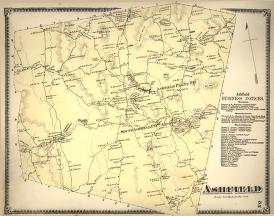 |
Ashfield, Massachusetts
#L02.021
Initially settled as Huntstown in 1745, Ashfield was incorporated and given its current name ca. 1765.
|
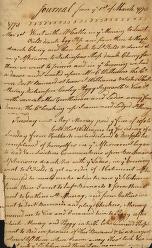 |
Dr. Elihu Ashley (1750-1817)
#L99.171
Elihu Ashley was a medical doctor in Deerfield, Massachusetts, in the early years of the American Republic.
|
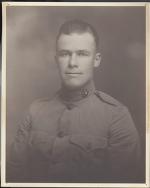 |
Thomas Williams Ashley (1894-1918)
#1958.15.01
Marine Second Lieutenant Thomas Ashley was the first young man from Deerfield, Massachusetts, to lose his life in World War I.
|
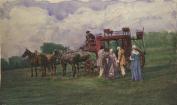 |
Reverend Jonathan Ashley (1712-1780)
#1996.14.1382.01-.07
The Reverend Jonathan Ashley came to Deerfield, Massachusetts, in 1732 as the town's second minister.
|
 |
C. Alice Baker (1833-1909)
#1996.12.0064
C. Alice Baker, educator and historian, is the author of "True Stories of New England Captives Carried to Canada During the Old French and Indian Wars" (1897).
|
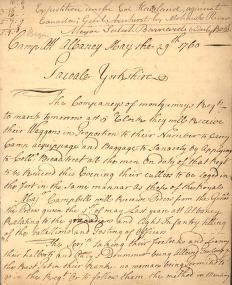 |
Salah Barnard (1725-1795)
#L99.178
Salah Barnard was a soldier, trader, and farmer in 18th century Deerfield, Massachusetts.
|
 |
Joseph Barnard (1717-1785)
#L99.172
Joseph Barnard was a Deerfield, Massachusetts, merchant at the time of the American Revolution (1775-1783), and also a military captain though he was known as "Ensign Barnard."
|
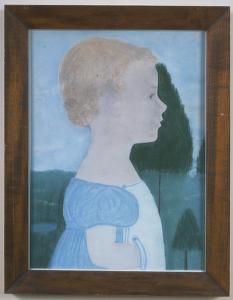 |
Ruth Henshaw Bascom (1772-1848)
#1959.09.03
Between 1819 and 1848, Ruth Bascom traveled through New England creating over one thousand life-size profile portraits using scissors, pastels, and watercolors.
|
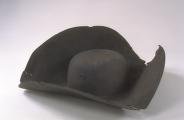 |
Battle of Bunker Hill Jun 17, 1775
#1927.28
After the battles at Lexington and Concord, militiamen like Joseph Stebbins of Deerfield, Massachusetts, owner of this tricorn hat, hurried to Boston and were at the Battle of Bunker Hill.
|
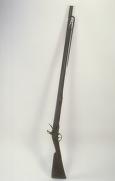 |
Battles of Saratoga Oct 17, 1777
#1882.81
The Battles of Saratoga renewed hopes of American independence for colonists like John Fellows (1751-1831) of Shelburne, Massachusetts, who picked up this English musket after British General Burgoyne's defeat.
|
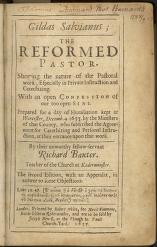 |
Hannah Westcarr Beamon
#L00.016
Hannah Westcarr Beamon (also spelled Beaman) was the first known schooldame of Deerfield, Massachusetts.
|
 |
Asher Benjamin (1773-1845)
#1999.03.0003
Asher Benjamin, the first American-born and American-trained architect, designed some of the buildings in Deerfield and Greenfield, Massachusetts, including a house that became Greenfield's library.
|
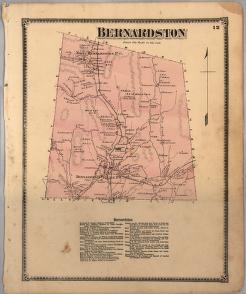 |
Bernardston, Massachusetts
#L02.005
Established as Fall Town Plantation in 1735, Bernardston was incorporated in 1762 and named for Massachusetts Royal Governor Fra
|
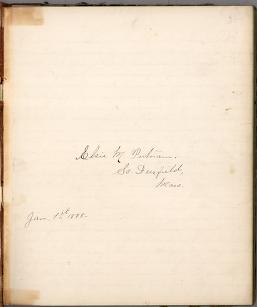 |
Blizzard of 1888 Dec 3, 1888
#L02.001
During the Blizzard of '88, Elsie Putnam of South Deerfield, Massachusetts, wrote in her diary (p. 25) that "it is the worst storm ever known in this vicinity."
|
 |
Bloody Brook Sep 18, 1675
#1999.03.0026
Muddy Brook in present-day South Deerfield, Massachusetts, was renamed Bloody Brook after a Native force attacked an English convoy during Metacom's (King Philip's) War.
|
 |
Buckland, Massachusetts
#L02.010
In 1779, a group of English settlers in Charlemont, Massachusetts, were granted their petition to make the town of Buckland.
|
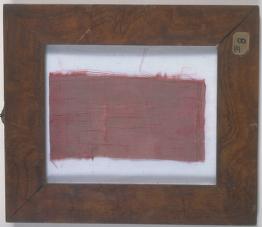 |
John Burgoyne (1722-1792)
#1880.027.01
British General Burgoyne's defeat at Saratoga renewed hopes of American independence for colonists like Colonel Hugh Maxwell of Charlemont, Massachusetts, who brought back this remnant of one of Burgoyne's flags.
|
 |
James Wells Champney (1843-1903)
#1996.12.0223
James Wells Champney, a professor of art at Smith College in Northampton, Massachusetts, for seven years, became known as one of the world's best pastel artists.
|
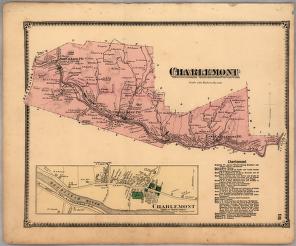 |
Charlemont, Massachusetts
#L02.008
In 1735, Boston Township No. 1 was created, and its southern half became Charlemont in 1765.
|
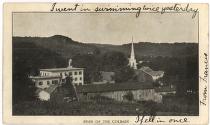 |
Colrain, Massachusetts
#1997.08.01.0102
Colrain started out as Boston Township No. 2 and was named Coleraine when it was incorporated in 1761.
|
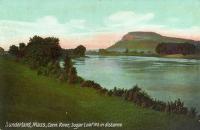 |
Connecticut River Valley
#1997.08.01.0079
The Connecticut River Valley is known for its rich farmland, created by repeated flooding since the river formed some 13,000 yea
|
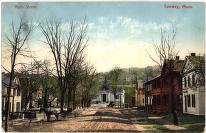 |
Conway, Massachusetts
#1999.03.0073
Conway was initially settled in 1712 and incorporated in 1767.
|
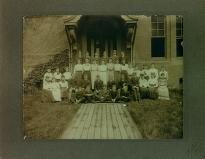 |
Deerfield Academy, Deerfield, Massachusetts
#1996.12.0402
Opened in 1799, Deerfield Academy offered a classical education to area students.
|
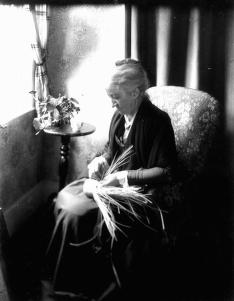 |
Deerfield Basket Makers (1899-1916)
#1996.14.1029.01-.02
During the Arts and Crafts Movement, this group of craftswomen in Deerfield, Massachusetts, worked out of their homes making useful baskets for exhibit and sale.
|
 |
Deerfield Raid Feb 29, 1704
#IR.001
In the 1704 attack on Deerfield, Massachusetts, by French and Native allies during Queen Anne's War (1701-1713), more than half the town's residents were killed or captured.
|
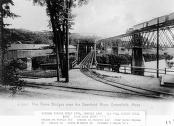 |
Deerfield River
#1996.37.01.118
The Deerfield River that flows from Vermont to Deerfield, Massachusetts, has played important roles in the area's fishing, agric
|
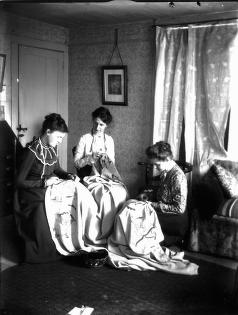 |
Deerfield Society of Blue and White Needlework (1896-1926)
#1996.14.1095
During the Arts and Crafts Movement, this group formed in Deerfield, Massachusetts, to revive the Colonial embroidery tradition and establish a village industry.
|
 |
Deerfield, Massachusetts
#1996.12.0443.01
Deerfield, Massachusetts, an 8000-acre land grant to the Proprietors of Dedham, was first settled by the English in 1669.
|
 |
Consider Dickinson (1761-1854)
#1875.19.04.01
Consider Dickinson of Deerfield, Massachusetts, was a soldier in the American Revolution (1775-1783), a trader, and a farmer.
|
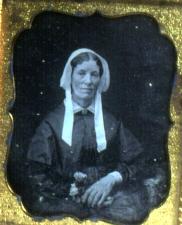 |
Esther (Harding) Dickinson (1790-1875)
#1958.08.a-.b
Esther (Harding) Dickinson of Deerfield, Massachusetts, provided for a town high school and library in her will.
|
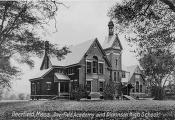 |
Dickinson High School, Deerfield, Massachusetts
#1996.37.01.100
Dickinson High School's history is a story of town tradition, town government, state law, and a generous, well-to-do resident.
|
 |
William Dorrell (1752-1846)
#MH.0309
At the turn of the 19th century in the Leyden, Massachusetts, area, William Dorrell and his followers held unconventional beliefs, including not eating or using animal products.
|
 |
Timothy Dwight (1752-1817)
#L98.040
Timothy Dwight, grandson of Northampton, Massachusetts, minister Jonathan Edwards, was an educator, an author, and President of Yale College for twenty-two years.
|
 |
Erving, Massachusetts
#L02.013
Erving became a town in 1838, one of the last in the state to be incorporated.
|
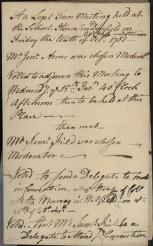 |
Samuel Field (1743-1800)
#L99.101
Samuel Field of Deerfield, Massachusetts, was a lawyer and delegate to the convention to ratify the U.S. Constitution, and also did other work, like many men of his time.
|
| |
Henry Needham Flynt (1893-1970)
#1958.14a.1-.3
Henry Needham Flynt was instrumental in preserving Deerfield, Massachusetts, history through the Pocumtuck Valley Memorial Association and by founding the Heritage Foundation (now Historic Deerfield) with his wife Helen (Geier) Flynt (1895-1986).
|
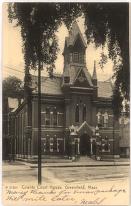 |
Franklin County, Massachusetts
#1999.03.0055
Franklin County in rural western Massachusetts was created from the northern third of Hampshire County in 1811 and named for Ben
|
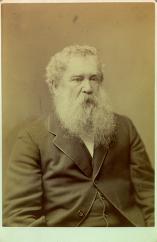 |
George Fuller (1822-1884)
#1996.12.0815
George Fuller of Deerfield, Massachusetts, achieved a national reputation as a painter.
|
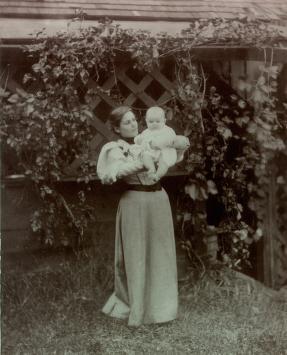 |
Lucia Fairchild Fuller (1870-1924)
#1995.10.10.192
Artist Lucia Fairchild Fuller, wife of Deerfield, Massachusetts, artist Henry Brown Fuller (1867-1934), painted a mural at the 1893 World's Columbian Exposition and later gained renown for her miniature portraits.
|
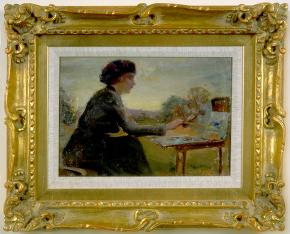 |
Elizabeth Brooks Fuller (1896-1979)
#1995.11.758
Granddaughter of Deerfield, Massachusetts, painter George Fuller, Elizabeth Brooks Fuller was an artist and active Deerfield community member.
|
 |
Horatio Gates (1727-1806)
#1883.30.03
Horatio Gates was a British Army officer in the French and Indian War (1754-1763), and later switched allegiance to fight for independence in the American Revolution (1775-1783).
|
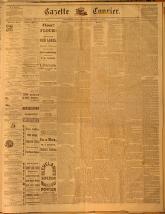 |
Gazette and Courier (1841-1932)
#L02.138
The Greenfield, Massachusetts, "Gazette and Courier" was a principal newspaper for Franklin County for nearly a century, and has existed under other names for much longer.
|
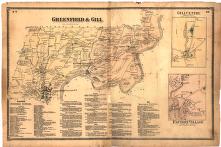 |
Gill, Massachusetts
#L02.012
Gill was originally part of Deerfield, Massachusetts, and was incorporated in 1793.
|
 |
Dr. Joseph Goodhue (1762-1849)
#N.204
Dr. Joseph Goodhue from Portsmouth, New Hampshire, lived during retirement with his wife in Deerfield, Massachusetts, the hometown of son-in-law Dr. Stephen West Williams (1790-1855).
|
 |
Sylvester Graham (1794-1851)
#L01.002
Sylvester Graham, who lived his last years in Northampton, Massachusetts, was a minister and social health reformer who is best known today for his Graham cracker.
|
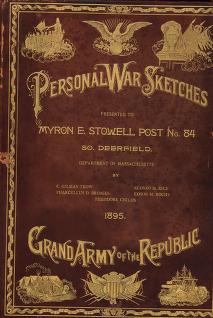 |
Grand Army of the Republic
#L02.026
The Grand Army of the Republic was founded to provide a fraternal organization for Union war veterans after the Civil War (1861-1865), and played a significant role in promoting Memorial Day and Flag Day.
|
 |
Ulysses S. Grant (1822-1885)
#L02.024
Ulysses S. Grant was a leading Union general in the Civil War (1861-1865) and the eighteenth U.S. President (1869-1877).
|
 |
Great Awakening 1730-1769
#L01.001
The first Great Awakening was a religious revival distinguished by dramatic and powerful preaching like that of Northampton, Massachusetts, minister Jonathan Edwards.
|
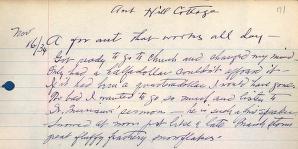 |
Great Depression 1929-1940
#L06.011
The 1929 depression in the United States was the most sweeping economic downturn in the country's history, affecting major institutions and people's day-to-day lives.
|
 |
Greenfield, Massachusetts
#L02.012
Greenfield was a district of Deerfield, Massachusetts, during European settlement, became a center of industry and government in
|
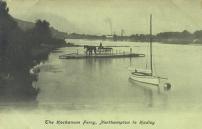 |
Hadley, Massachusetts
#1997.08.01.0051
Hadley, named after a village in England, was incorporated in 1661.
|
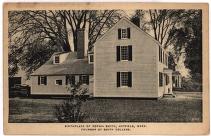 |
Hatfield, Massachusetts
#1997.08.01.0104
Hatfield was separated from Hadley, Massachusetts, and incorporated as a town in 1670.
|
 |
Zur Hawks (1760-1844)
#L99.157
Zur Hawks was a tanner and a shoemaker in Deerfield, Massachusetts.
|
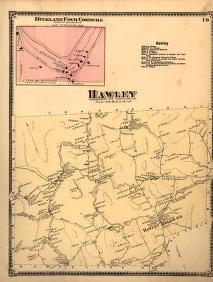 |
Hawley, Massachusetts
#L02.009
Incorporated in 1792, Hawley was named in honor of Joseph Hawley, a leading citizen of Northampton.
|
 |
Heath, Massachusetts
#L02.003
Heath was originally part of Charlemont and was incorporated as a town in 1785.
|
 |
Historical Pageants 1910-1916
#L99.015
From 1910 to 1916, residents of Deerfield, Massachusetts, with a professional director, produced three historical pageants - a popular form of entertainment at a time of rapid change.
|
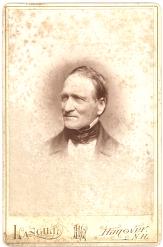 |
Edward Hitchcock (1793-1864)
#1996.12.1151
Dr. Edward Hitchcock was a scientist and educator at Deerfield Academy in Deerfield, Massachusetts, and later at Amherst College in nearby Amherst.
|
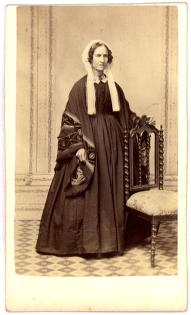 |
Orra (White) Hitchcock (1796-1863)
#1996.12.2670.83
Orra (White) Hitchcock was an artist who illustrated many scientific publications, including those of her husband, Edward Hitchcock (1793-1864).
|
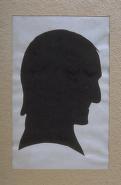 |
Justin Hitchcock (1752-1822)
#1900.06.40
Justin Hitchcock was a fifer and soldier in the American Revolution (1775-1783) and later made a living as a hatter in Deerfield, Massachusetts.
|
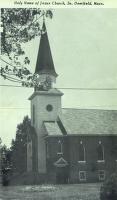 |
Holy Name of Jesus Church, South Deerfield, Massachusetts
#1997.08.01.0033
Holy Name of Jesus Church formed in 1929 as part of the Polish National Catholic Church following an influx of Polish immigrants
|
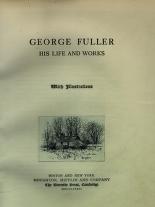 |
William Dean Howells (1837-1920)
#L99.040
William Dean Howells, author of this tribute to Deerfield, Massachusetts, artist George Fuller (1822-1884), had a prolific writing career that included numerous novels, travel books, poems, and essays.
|
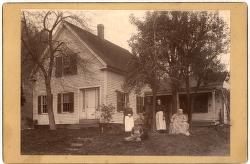 |
Howes Brothers Photographers (1890-1910)
#1996.12.3325
Brothers Alvah, Walter, and George Howes of Ashfield, Massachusetts, specialized in selling affordable, easily produced photographs, and thus created a record of the lives of ordinary people.
|
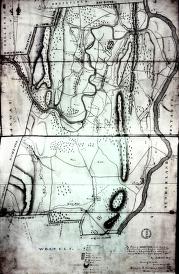 |
Arthur Wellesley Hoyt (1811-1899)
#L98.006
Atrhur Wellesley Hoyt was a civil engineer in 19th century Deerfield, Massachusetts.
|
 |
Epaphras Hoyt (1765-1850)
#1983.504b
Epaphras Hoyt of Deerfield, Massachusetts, was a surveyor, postmaster, justice of the peace, register of deeds, High Sheriff, and member of the 1820 constitutional convention.
|
 |
Elihu Hoyt (1771-1833)
#1905.10.01
Elihu Hoyt of Deerfield, Massachusetts, held military, county, and state offices, and wrote a sketch of Deerfield's first English settlement to help preserve the town's history.
|
 |
Florence Kelley (1859-1932)
#L01.060
A reformer and advocate for the rights of children, Florence Kelley symbolized the increasing power of women in the late 19th century.
|
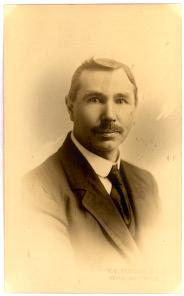 |
Cornelius Kelley (1874-1954)
#1996.12.2041.01-.03
Cornelius Kelley was a Deerfield, Massachusetts, blacksmith who turned his talents to ornamental work after the demand for repairing agricultural equipment declined.
|
 |
Martin Kellogg, Jr. (1686-1753)
#L00.052
Martin Kellogg, Jr., of Deerfield, Massachusetts, was captured twice during Queen Anne's War (1701-1713), and after his second return worked for the colony as a messenger, interpreter, and spy.
|
 |
Lake Hitchcock
#1999.03.0017
About 13,700 years ago, Lake Hitchcock was formed by a dam in the bedrock at present-day Rocky Hill, Connecticut.
|
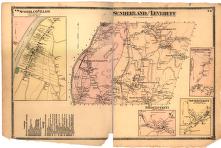 |
Leverett, Massachusetts
#L02.018
By 1773, settlers in the eastern portion of Sunderland, Massachusetts, successfully petitioned to have their own town, incorpora
|
 |
Leyden, Massachusetts
#L02.004
The Pocumtucks were the first known inhabitants of what Europeans settled as Fall Town Plantation, later renamed Bernardston - p
|
 |
Mashalisk the Old Woman, Mother of Wuttawwalun (1591-1676)
#L98.014
Mashalisk, a Pocumtuck woman living in what is now Deerfield, Massachusetts, signed land deeds and tried to have productive trade with the English while keeping traditional lifeways and territory.
|
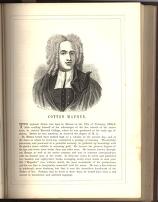 |
Reverend Cotton Mather (1662-1727)
#L00.086.059ex
Cotton Mather was one of Puritan New England's leading thinkers and ministers.
|
 |
William Holmes McGuffey (1800-1873)
#L01.124
William Holmes McGuffey, a professor, minister, and author, is most remembered for his "Readers" that become one of the best-known book series in 19th century America.
|
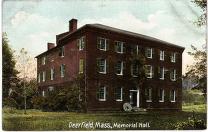 |
Memorial Hall Museum, Deerfield, Massachusetts
#1999.03.0050
Memorial Hall was dedicated in 1880 as the museum for one of the country's first historical preservation societies.
|
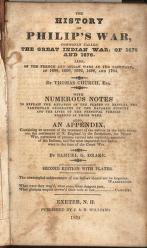 |
Metacom's (King Philip's) War 1675-1676
#L99.122
Metacom (also known as King Philip) was a Wampanoag who rallied members of other Native groups in New England to forcibly halt the taking of land by the English.
|
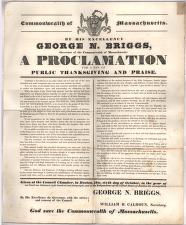 |
Mexican War 1846-1848
#L02.149
The Mexican War, which made Texas and the present southwestern states part of the United States, was unpopular in New England because of its potential for adding slave states.
|
 |
Ellen Miller (1854-1929)
#1996.14.2224
Ellen Miller was a cofounder of the Deerfield Society of Blue and White Needlework (1896-1926) in Deerfield, Massachusetts, and was responsible for experiments with the dyes.
|
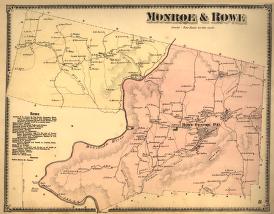 |
Monroe, Massachusetts
#L02.002
In 1820, landowners in "The Gore" section of Rowe, Massachusetts, petitioned to separate and Monroe was incorporated in 1822.
|
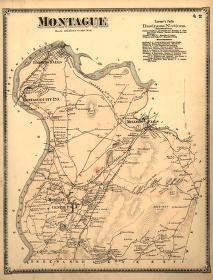 |
Montague, Massachusetts
#L02.016
The town of Montague, with its five villages, has a rich and varied history of agriculture, industry, recreation, and spiritual
|
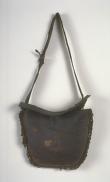 |
Daniel Morgan (1736-1802)
#1875.19.07.01
During the American Revolution (1775-1783), Daniel Morgan and his elite riflemen, who would have used the type of bullet pouch shown here, played a key role in several American victories.
|
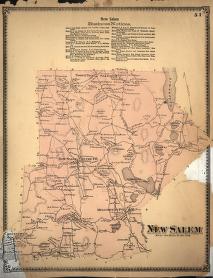 |
New Salem, Massachusetts
#L02.020
New Salem became a town in 1753 and by 1820 was the largest town in Franklin County, with 2,145 inhabitants.
|
 |
Lucinda Nims (1784-1857)
#L99.155
Lucinda Nims of Deerfield, Massachusetts, inherited her father's house and property "so long as she shall remain unmarried."
|
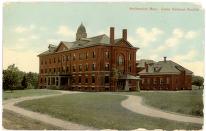 |
Northampton, Massachusetts
#1997.08.01.0113
Northampton was purchased from the Nonotucks by John Pynchon (1626-1703) in 1653.
|
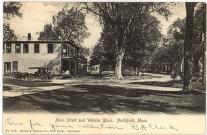 |
Northfield, Massachusetts
#1997.08.01.0115
In 1713 after two prior attempts, Europeans settled permanently in Squakheag, which became incorporated as Northfield in 1723.
|
 |
Orange, Massachusetts
#L02.014
Named after Prince William of Orange when the area was granted district status in 1783, Orange became a town in 1810.
|
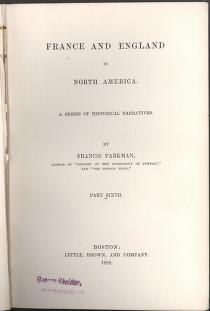 |
Francis Parkman (1823-1893)
#L01.117
Francis Parkman was a preeminent historian and prolific, skilled writer whose works mirrored the prejudices of his times.
|
 |
Peskeompskut May 19, 1676
#L98.025
Located at a falls on the Connecticut River in present-day Montague, Massachusetts, Peskeompskut was a gathering site for Native peoples and scene of an English attack on a Native encampment during Metacom's (King Philip's) War (1675-1676).
|
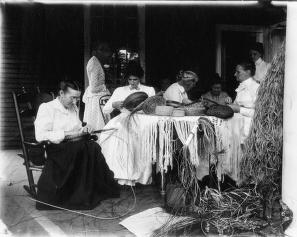 |
Pocumtuck Basketmakers (1899-1935)
#1996.14.1710
The Deerfield, Massachusetts, women who made up the Pocumtuck Basket Makers worked primarily in raffia to create imaginative, useful baskets.
|
 |
Pocumtuck Nation
#L98.012
The Pocumtucks were the Native American nation inhabiting the middle Connecticut River Valley when European settlement started.
|
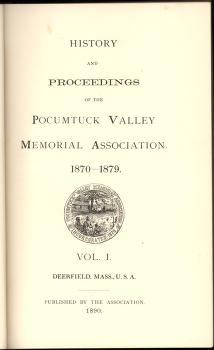 |
Pocumtuck Valley Memorial Association, Deerfield, Massachusetts
#L99.138
The Pocumtuck Valley Memorial Association is one of the country's first historical preservation societies, whose many offerings
|
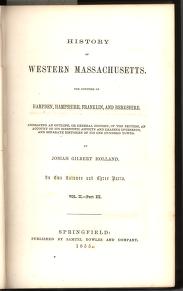 |
Lucy Terry Prince (1725-1821)
#L00.070
Lucy Terry Prince, brought as an African slave to Deerfield, Massachusetts, at age five, wrote a renowned poem about a Native attack on Deerfield and lived on a Vermont farm after marrying free African American Abijah Prince.
|
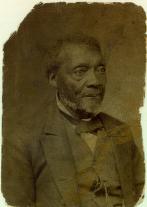 |
John Putnam (1818-1895)
#1996.29
Greenfield, Massachusetts, barber John Putnam was a well-known violin player, bandleader, and dance prompter in the Greenfield area.
|
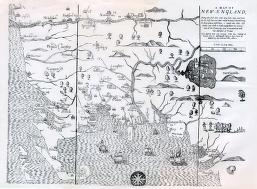 |
William Pynchon (1590-1662)
#L98.017
William Pynchon founded Springfield (then part of Connecticut and much larger than present-day Springfield, Massachusetts) and created a lucrative fur trading network.
|
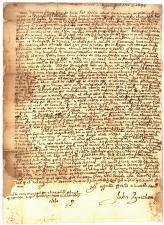 |
John Pynchon (1626-1703)
#L01.052
John Pynchon of Springfield, Massachusetts, inherited his father's business and political positions, making him the wealthiest and most powerful man in 17th century western Massachusetts.
|
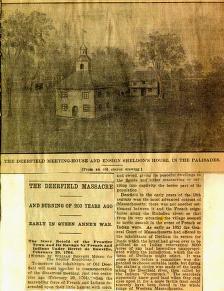 |
Queen Anne's War 1701-1713
#L99.010
The War of the Spanish Succession was known as Queen Anne's War in New England, named for the British monarch who reigned from 1702 to 1714.
|
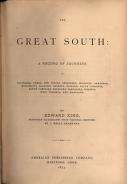 |
Reconstruction 1865-1875
#L05.047
The Reconstruction period in the American South followed the Civil War (1861-1865) and lasted about ten years.
|
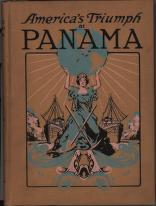 |
Theodore Roosevelt (1858-1919)
#L00.087
Theodore Roosevelt entered politics soon after graduating from Harvard College in 1880 and in 1901 became the twenty-sixth United States President.
|
 |
Rowe, Massachusetts
#L02.002
Rowe was almost entirely agricultural for about 100 years, until the Hoosac Tunnel brought railroad access in 1875 and spurred s
|
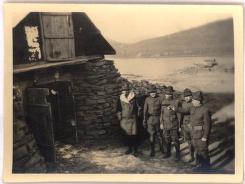 |
Russian Civil War 1917-1922
#1996.12.3633
7,000 Americans were among the Allied forces in Russia's Civil War who fought unsuccessfully to keep the Soviets from installing a Communist government.
|
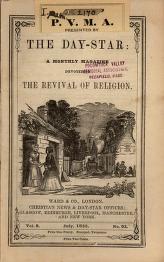 |
Second Great Awakening 1820-1859
#L05.060
North America's Second Great Awakening was a revival of Protestantism that came to involve several social and political reform movements.
|
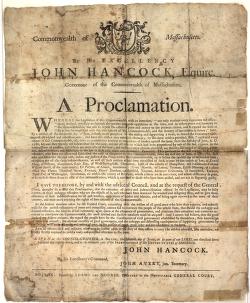 |
Shays' Rebellion 1786-1787
#L03.001
Led by Daniel Shays (1747-1825) of Pelham, Massachusetts, and peopled largely by disgruntled farmers, the "army" rebelled against taxes imposed by the government in Boston.
|
 |
Shelburne Falls, Massachusetts
#1999.03.0064
The village of Shelburne Falls, formerly Salmon Falls, is comprised of the commercial centers of two towns on the Deerfield Rive
|
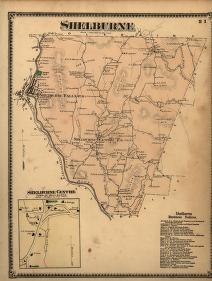 |
Shelburne, Massachusetts
#L02.011
Originally part of Deerfield, Shelburne was incorporated in 1768.
|
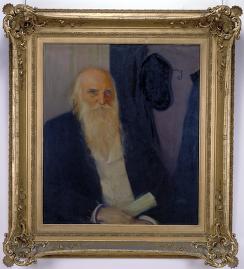 |
George Sheldon (1818-1916)
#1977.14
George Sheldon of Deerfield, Massachusetts, was a farmer, an historian, and the primary founder of Deerfield's Pocumtuck Valley Memorial Association in 1870.
|
 |
Persis (Hoyt) Sheldon (1747-1830)
#1892.18.04
Persis (Hoyt) Sheldon of Deerfield, Massachusetts, grew up with her nine brothers and sisters in Deerfield's 1699 "Old Indian House" where her father, David Hoyt (1722-1814), kept tavern.
|
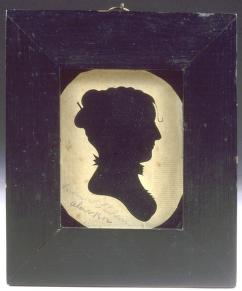 |
Caroline (Stebbins) Sheldon (1789-1865)
#1918.15.01
Caroline Stebbins was born in Deerfield, Massachusetts, attended Deerfield Academy, and married local farmer Seth Sheldon (1787-1860).
|
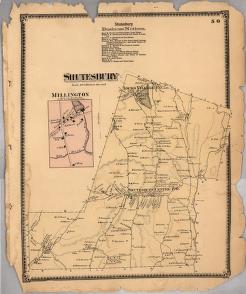 |
Shutesbury, Massachusetts
#L02.019
Europeans first settled what they called "Roadtown" after a road was built between Lancaster and Sunderland, Massachusetts, and
|
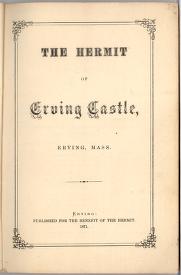 |
John Smith (1823-1900)
#L02.172
A man known as "The Hermit" lived in a cave on Northfield Mountain in Erving, Massachusetts, and gave his name as John Smith.
|
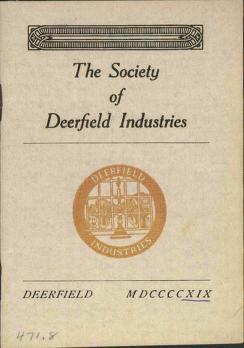 |
Society of Deerfield Industries (1901-1926)
#L99.134
This group formed in Deerfield, Massachusetts, to supplant "machine made ugliness . . . with good handwork" and thus restore craftsmanship to "its old place of honor".
|
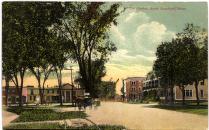 |
South Deerfield, Massachusetts
#1997.08.01.0121
The village of South Deerfield, formerly known as Bloody Brook, petitioned unsuccessfully to separate from Deerfield in 1809.
|
 |
Spanish-American War post 1898
#1959.07.08
Part of a larger goal to expand U.S. territory and influence, the Spanish-American War epitomized the imperialism of the time.
|
 |
Springfield Armory, Springfield, Massachusetts
#1937.06.01
The arsenal established at Springfield in 1777 for manufacturing gun carriages and cartridges operated as a national armory for
|
 |
Springfield, Massachusetts
#L06.077
Established by William Pynchon (1590-1662) in 1636, Springfield has played important roles in the region's and nation's economic
|
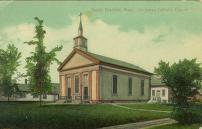 |
St. James Roman Catholic Church, South Deerfield, Massachusetts
#1997.08.01.0034
In 1895, the Monument Congregational Church building was moved and became St. James, the town of Deerfield's first Catholic chur
|
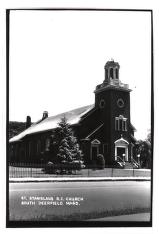 |
St. Stanislaus Roman Catholic Church, South Deerfield, Massachusetts
#1996.12.2372
St. Stanislaus, the second Catholic church in the town of Deerfield, formed in 1908 to provide a religious home for Polish Catho
|
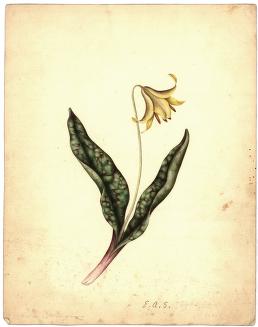 |
Eliza Allen Starr (1824-1901)
#2002.21.06
Artist and author Eliza Allen Starr, born in Deerfield, Massachusetts, was the first woman to receive the prestigious Laetare Medal, an award given to American Catholics.
|
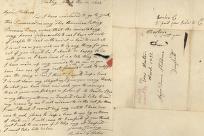 |
Dennis Stebbins (1778-1842)
#L99.152
Dennis Stebbins of Deerfield, Massachusetts, followed the model set by his father, Joseph (1749-1816), serving his town as a selectman and member of the militia.
|
 |
Joseph Stebbins, Jr. (1749-1816)
#1927.28
Joseph Stebbins, owner of this tricorn hat, was a Deerfield, Massachusetts, farmer whose service in the American Revolution (1775-1783) made him a local symbol of revolutionary valor and zeal.
|
 |
Harriet Beecher Stowe (1811-1896)
#L05.080
Harriet Beecher Stowe is best known for the novel "Uncle Tom's Cabin" that galvanized Northern public opinion against slavery.
|
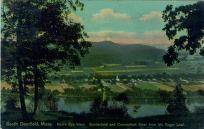 |
Sunderland, Massachusetts
#1999.03.0019
The place that European settlers called "Swampfield" was incorporated in 1714, changing to the name "Sunderland" in 1718.
|
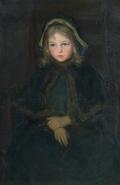 |
Augustus Vincent Tack (1870-1949)
#1957.11.01
Augustus Vincent Tack was a nationally acclaimed portrait and mural painter who lived in rural Deerfield, Massachusetts, and New York City.
|
 |
Reverend Edward Taylor (1642-1729)
#NR.06
Edward Taylor, who owned this English tapestry piece, was a Puritan minister in Westfield, Massachusetts, and an accomplished poet whose talents were not made public until 1939.
|
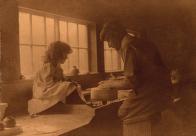 |
Chauncey Thomas (1876-1950)
#1996.14.0322.01
Chauncey Thomas worked as a potter in Deerfield, Massachusetts, from 1908 to 1911, when many of the town's residents were active in the Arts and Crafts Movement.
|
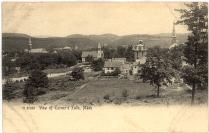 |
Turners Falls, Massachusetts
#1997.08.01.0124
The Turners Falls Company formed in 1866 and created the industrial village of Turners Falls near an old dam and canal on the Co
|
 |
War of 1812 1812-1815
#1885.01.02
The War of 1812 between the United States and England was unpopular in New England, though men like Moses Nelson of Buckland, Massachusetts, owner of this cartridge box, still fought in what many Americans saw as their second war for independence.
|
| |
War of the Spanish Succession 1701-1714
During the War of the Spanish Succession, territorial disputes among European nations reached North America, where New Englanders called it Queen Anne's War.
|
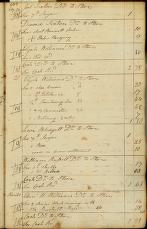 |
Orlando Ware (1779-1860)
#L00.019
Orlando Ware owned a general store in Deerfield, Massachusetts, in the early 19th century.
|
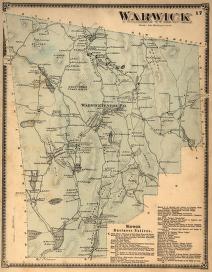 |
Warwick, Massachusetts
#L02.007
Warwick's land was first granted in 1735 to survivors of an expedition to Canada in a company led by Andrew Gardner.
|
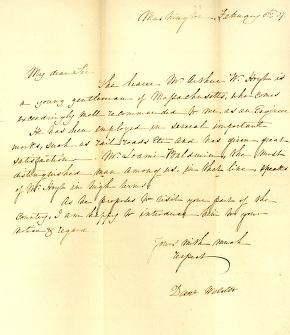 |
Daniel Webster (1782-1852)
#L99.163
Daniel Webster, a prominent lawyer and U.S. politician, provided engineer Arthur Wellesley Hoyt (1811-1899) of Deerfield, Massachusetts, a powerful business and social tool with this 1837 letter of introduction.
|
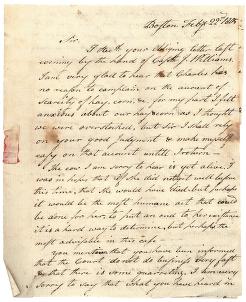 |
Samuel Wells (1772-1816)
#L01.026
Samuel Wells lived and farmed in Deerfield in western Massachusetts, and corresponded about state politics and agricultural markets with friend and Deerfield General Court representative Elihu Hoyt (1771-1833).
|
 |
Wendell, Massachusetts
#L02.013
Wendell separated from Shutesbury to become a town in 1781, and was named after Oliver Wendell (1733-1818) who funded the local
|
 |
Whately, Massachusetts
#L02.017
Whately was named for British Member of Parliament Thomas Whately (1728-1772) when it was incorporated as a town in 1771.
|
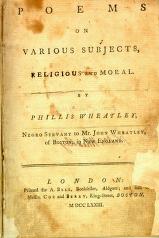 |
Phillis Wheatley (1753-1784)
#L98.054
Boston slave Phillis Wheatley was the first African American published poet, whose poems often spoke of Christian salvation or commemorated someone who had died.
|
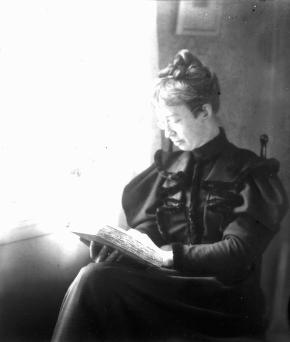 |
Margaret C. Whiting (1860-1946)
#1996.14.1628.01-.02
Margaret Whiting was a cofounder of the Deerfield Society of Blue and White Needlework (1896-1926), one of several handcraft industries in Deerfield, Massachusetts, during the Arts and Crafts Movement.
|
 |
Eunice Kanenstenhawi Williams (1696-1785)
#1998.02.500.02
Eunice Williams of Deerfield, Massachusetts, sixth child of Reverend John Williams (1664-1729) and Eunice (Mather) Williams (1664-1704), was taken captive in the 1704 Deerfield raid during Queen Anne's War (1701-1713) and remained with her Kanienkehaka (Mo
|
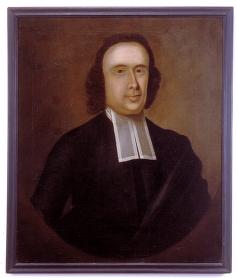 |
Stephen Williams (1693-1782)
#1889.04
Stephen Williams was taken captive in the 1704 raid on Deerfield, Massachusetts, during Queen Anne's War (1701-1713), was redeemed, and in adulthood served as minister of Longmeadow, Massachusetts, for sixty-six years.
|
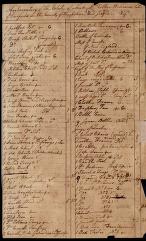 |
Esther (Williams) Williams (1726-1800)
#L99.066
Esther Williams of Weston, Massachusetts, came to Deerfield, Massachusetts, in 1748 as the second wife of her cousin Dr. Thomas Williams (1718-1775).
|
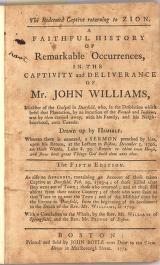 |
Reverend John Williams (1664-1729)
#L00.068
Rev. Williams of Deerfield, Massachusetts, was captured with other family members and townspeople in the 1704 Deerfield raid during Queen Anne's War (1701-1713), and wrote "The Redeemed Captive Returning to Zion" upon his return.
|
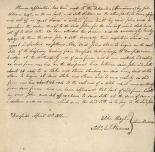 |
John Williams, Esq. (1751-1816)
#L99.149
John Williams, Esq., graduated from Harvard College, practiced law, and helped his sister Eunice run a general store in Deerfield, Massachusetts.
|
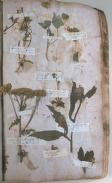 |
Stephen West Williams, M.D. (1790-1855)
#L00.031
Stephen West Williams of Deerfield, Massachusetts, was a medical school graduate (King's College, now Columbia University) and author of numerous medical texts.
|
 |
William Stoddard Williams, M.D. (1762-1829)
#L99.024
William Stoddard Williams of Deerfield, Massachusetts, was one of several generations of Deerfield physicians in the Williams family.
|
 |
World War I 1914-1918
#L01.043
After the United States entered World War I in 1917, the war was brought close to home for people such as the Ashleys of Deerfield, Massachusetts, through the letters and deaths of their loved ones.
|
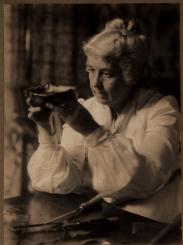 |
Madeline Yale Wynne (1847-1918)
#1996.14.1234
Madeline Yale Wynne was a central figure among the Deerfield, Massachusetts, residents who embraced the Arts and Crafts Movement at the turn of the 20th century.
|



















































































































































